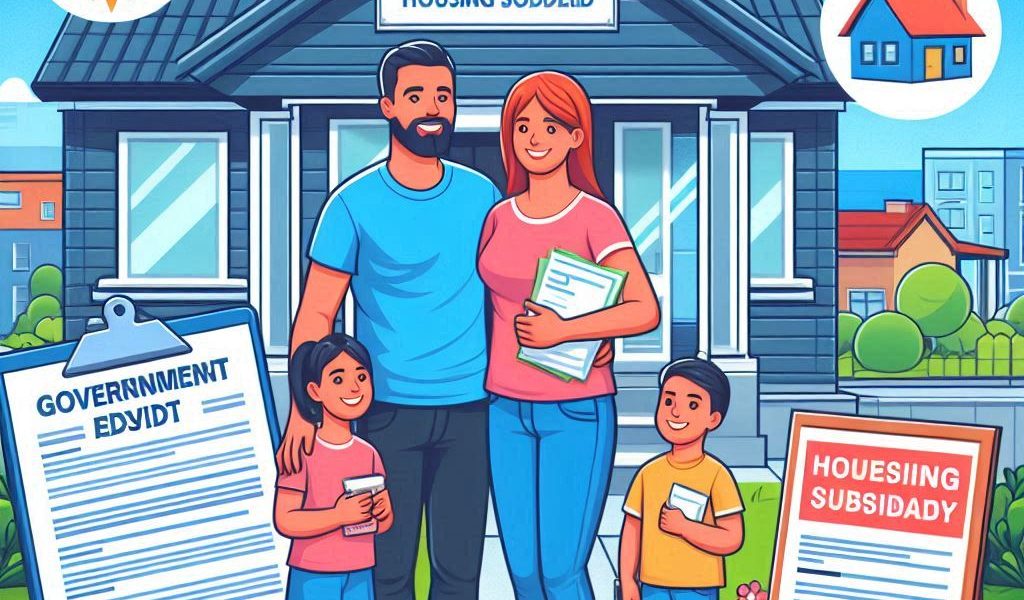The dream of owning a home is universal, and for many first-time buyers in India, it’s a significant milestone. However, with property prices soaring across the country, particularly in urban centers, this dream remains out of reach for many, especially those with limited financial resources. Fortunately, the Indian government has launched several schemes under the Housing & Real Estate Subsidies program to ease the financial burden on first-time homebuyers.
These government-backed subsidies are designed to provide financial assistance, making home ownership more accessible for low to middle-income groups. From interest rate subsidies on home loans to financial aid for building or purchasing homes in rural areas, there are numerous options available. In this comprehensive blog, we will delve into the different Housing & Real Estate Subsidies available for first-time buyers in India, how they work, and how you can apply for them.
What Are Housing & Real Estate Subsidies?
Housing and Real Estate subsidies are financial aids provided by the government to make homes more affordable for first-time buyers. These subsidies typically come in the form of reduced interest rates on home loans, direct financial assistance for construction or purchase of homes, and tax incentives. The main objective of these subsidies is to provide support to people who may not have sufficient savings to buy a home outright, especially in cities with high property prices.
Why Are Housing Subsidies Important?
In recent years, the real estate market in India has become increasingly unaffordable for many first-time buyers. The rise in property prices, along with high-interest rates on home loans, has made it difficult for lower-income families to realize their dream of homeownership. Government subsidies can:
- Lower Financial Burdens: By reducing the overall cost of purchasing a home, subsidies help families save money and make homeownership affordable.
- Promote Financial Inclusion: Housing subsidies help individuals who are not able to afford a home through traditional means. This ensures that more people, particularly from marginalized and economically weaker sections, can own homes.
- Boost Economic Growth: Increased homeownership helps the economy in various ways, from the construction industry to the banking sector. Subsidies stimulate demand for homes, encouraging growth in the real estate market.
- Improve Quality of Life: Owning a home significantly improves the standard of living for many individuals and families. It provides a sense of security, ownership, and stability.
Types of Housing & Real Estate Subsidies for First-Time Buyers
India offers several schemes and programs under the Housing & Real Estate Subsidy category aimed at supporting first-time buyers. Below are the key schemes that you should know about:
1. Pradhan Mantri Awas Yojana (PMAY)
The Pradhan Mantri Awas Yojana (PMAY) is one of the most popular government schemes designed to provide affordable housing to economically weaker sections of society. Under this initiative, the government offers interest subsidies on home loans for purchasing or constructing homes.
- Eligibility: PMAY is open to both urban and rural families who meet the income criteria. Specifically, there are three income groups under this scheme:
- EWS (Economically Weaker Section): Annual income up to ₹3 lakh.
- LIG (Lower Income Group): Annual income between ₹3 lakh to ₹6 lakh.
- MIG (Middle Income Group): Annual income between ₹6 lakh to ₹18 lakh.
- Benefits:
- Interest Subsidy: The scheme offers an interest subsidy on home loans of up to ₹6 lakh for eligible applicants.
- Credit Linked Subsidy Scheme (CLSS): First-time buyers can receive an interest subsidy of up to 6.5% on loans for purchasing or constructing homes.
- How to Apply: Applications can be made through the official PMAY portal. Eligible applicants can also apply through approved banks and financial institutions.
2. Interest Subsidy for First-Time Home Buyers under the MIG Scheme
Under the MIG (Middle Income Group) category of PMAY, there is an additional subsidy provided specifically to first-time homebuyers in the middle-income bracket. This scheme aims to offer support for homebuyers who earn more than the LIG group but still find it difficult to afford high property prices.
- Eligibility: Applicants must belong to the MIG I (Annual income ₹6 lakh to ₹12 lakh) or MIG II (Annual income ₹12 lakh to ₹18 lakh) group.
- Benefits:
- Interest Subsidy: Homebuyers in these income groups can avail of a subsidy of 3% on home loans of up to ₹12 lakh.
- How to Apply: Eligible individuals can apply for this subsidy through participating banks, NBFCs (Non-Banking Financial Companies), and the official PMAY portal.
3. Credit Linked Subsidy Scheme (CLSS)
The Credit Linked Subsidy Scheme (CLSS) under PMAY provides interest subsidies to first-time homebuyers in urban areas. This subsidy is linked to the home loan amount and varies depending on the applicant’s income group.
- Eligibility: First-time homebuyers with an annual income of up to ₹18 lakh can avail of this subsidy.
- Benefits:
- Interest Subsidy: First-time homebuyers are eligible for an interest subsidy of 6.5% on home loans for the purchase of a new or existing home.
- How to Apply: Applicants can approach banks, HFCs (Housing Finance Companies), and NBFCs to apply for CLSS. They must fill out the application form and submit the required documents.
4. Pradhan Mantri Jan Arogya Yojana (PMJAY) – Housing Component
Although PMJAY is primarily known for its health insurance component, it also includes provisions for housing support. Under PMJAY, the government offers housing assistance to low-income families living in rural areas.
- Eligibility: Low-income groups and rural families are eligible for the scheme.
- Benefits:
- Financial Assistance: PMJAY provides financial assistance for the construction of homes, particularly in rural areas.
- How to Apply: Interested applicants can visit local government offices or the official PMJAY website to apply for housing assistance under this scheme.
5. Subsidy on Stamp Duty and Registration Fees
The government offers a stamp duty and registration fee subsidy for first-time homebuyers. These are one-time costs associated with property purchases and can sometimes be overwhelming.
- Eligibility: Various state governments offer this subsidy based on income groups or eligibility criteria.
- Benefits:
- Reduction in Costs: State governments may provide full or partial exemption from stamp duty and registration charges.
- How to Apply: Check with local government authorities or visit state government websites for details on eligibility and how to apply.
6. State-Specific Housing Subsidies
In addition to central government schemes, several state governments offer their own housing subsidies for first-time buyers. States like Maharashtra, Uttar Pradesh, Tamil Nadu, and West Bengal have specific subsidies for low-income families and first-time buyers.
- Eligibility: Varies depending on the state and its policies.
- Benefits:
- Affordable Housing: Reduced housing prices or additional subsidies for construction or purchase.
- How to Apply: Applicants need to check with their respective state housing boards or the state’s official website for available schemes.
How to Apply for Housing Subsidies
Applying for housing subsidies generally involves the following steps:
1. Check Eligibility Criteria
Before applying, ensure that you meet the eligibility criteria outlined by the government schemes. This includes income limits, family size, and whether you are a first-time homebuyer.
2. Prepare Required Documents
- Proof of identity (Aadhaar card, passport, etc.)
- Proof of income (salary slip, tax returns, etc.)
- Property documents (if applicable)
- Bank details and loan-related information (for interest subsidy schemes)
3. Submit Application
Once you have the required documents, you can apply through the official government portals (like PMAY) or directly with your chosen bank or financial institution.
4. Approval and Disbursement
After submission, your application will be processed. If approved, the subsidy will be disbursed either as a reduction in the home loan interest rate or as direct financial assistance.
Conclusion
Owning a home is a significant achievement, and with government-backed housing subsidies, first-time homebuyers have more opportunities to realize this dream. Whether through the Pradhan Mantri Awas Yojana, Credit Linked Subsidy Scheme, or state-specific subsidies, there are several avenues for financial assistance available.
It’s essential for first-time buyers to stay informed about the latest schemes and apply for subsidies that suit their needs. By doing so, they can significantly reduce the financial burden associated with purchasing a home, ensuring that the journey to homeownership is a smooth and achievable one.




